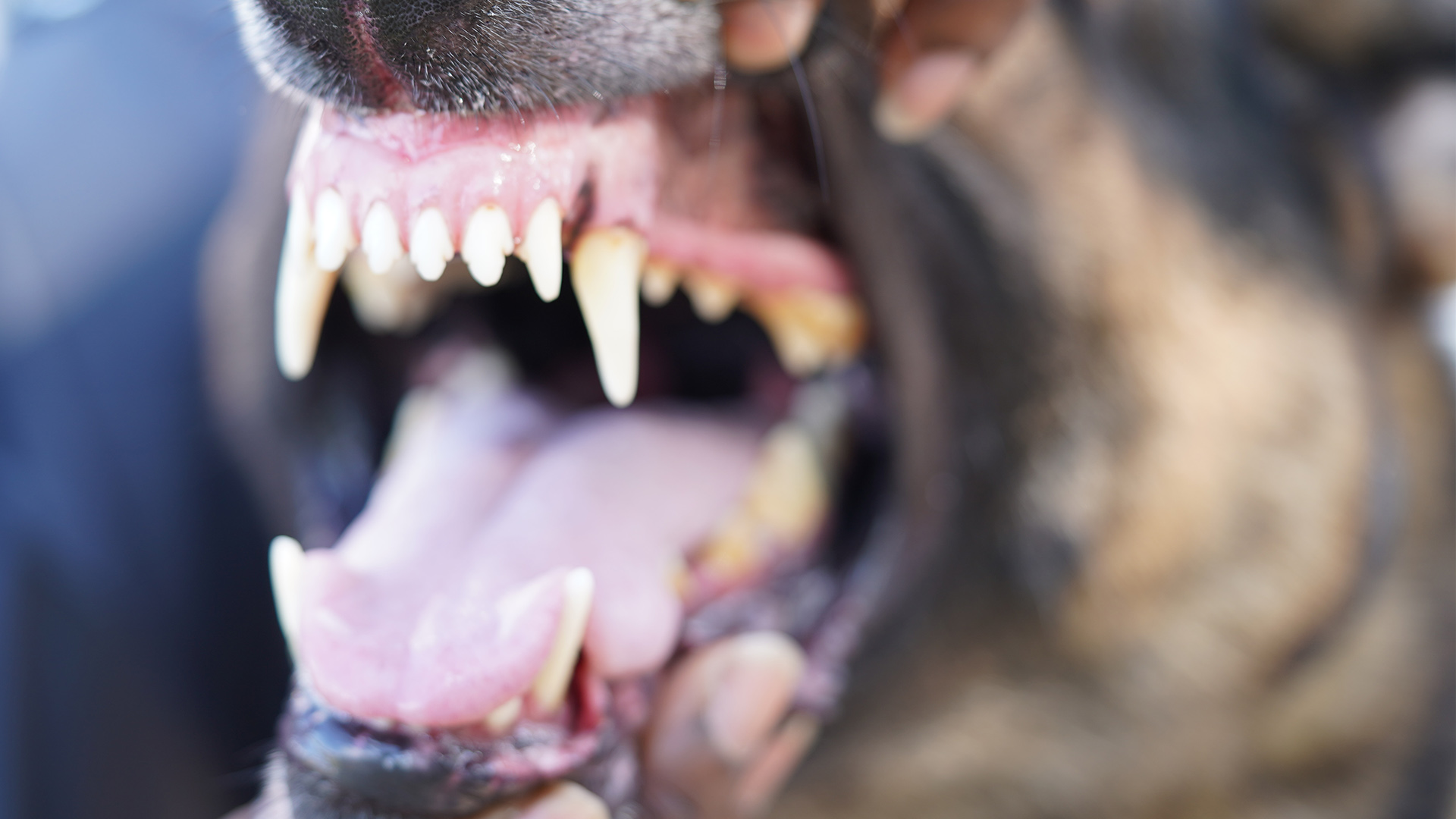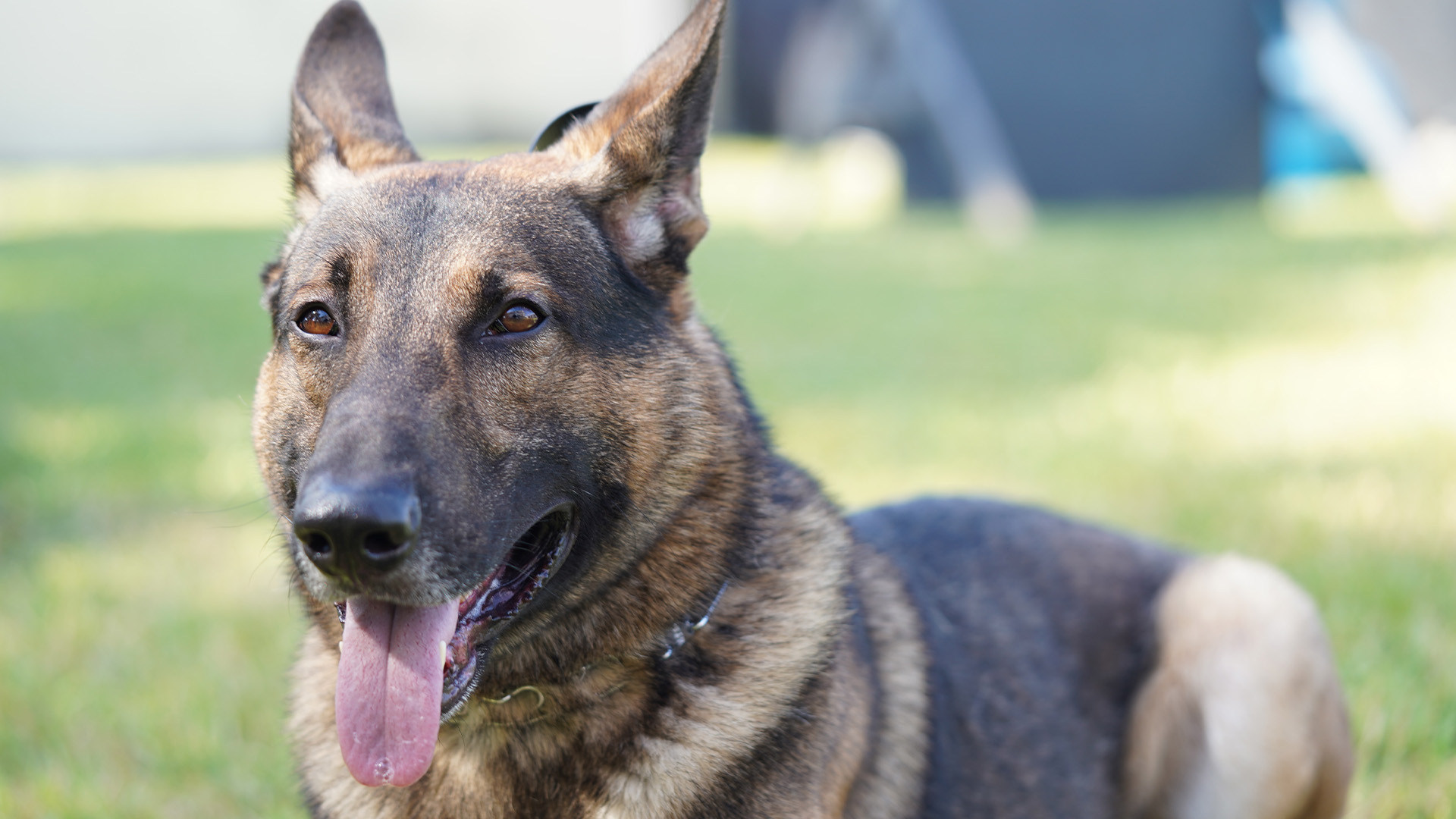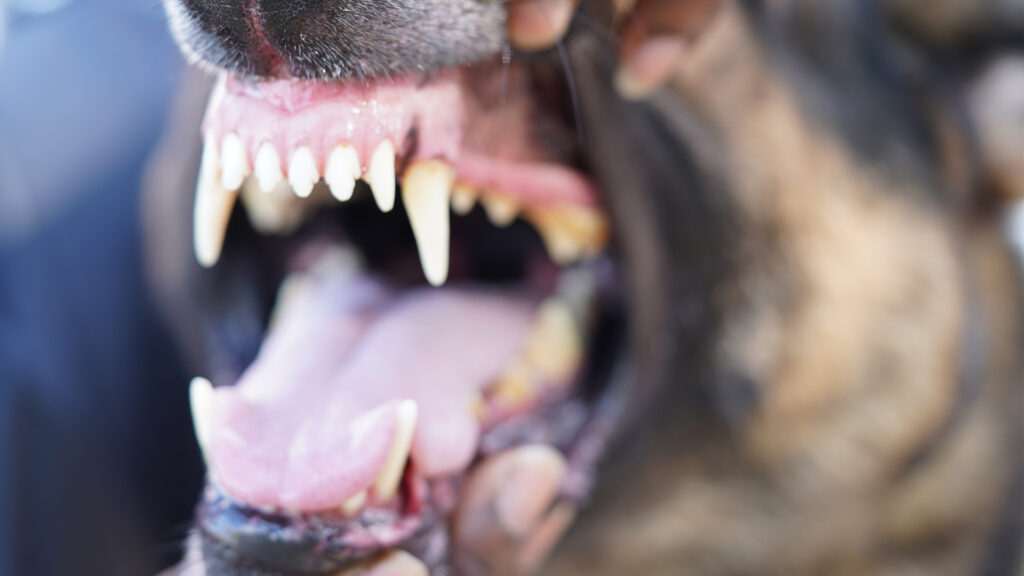Many dog owners struggle to differentiate between protective and aggressive behavior in their dogs. While the two can sometimes appear similar, they stem from different motivations and require different approaches to handling and training.
Understanding your dog’s behavior is crucial for ensuring a safe and harmonious environment for both your pet and those around you.
At Shultz K9, we specialize in training dogs to bring out the best in their behavior. Schedule a free evaluation so we can meet your dog and explore whether your dog is aggressive or protective and how to manage and train these behaviors.

Can You Train Aggression Out of a Dog?
Yes, in most cases, aggression can be trained out of a dog; however, certain factors may be present in the dog’s history that may prevent training from being effective.
One of the most common questions dog owners have is whether aggression can be trained out of a dog. The answer is complex and depends on various factors, including the dog’s history and the root cause of the aggression.
Aggression in dogs can manifest in various ways, including growling, barking, lunging, snapping, and biting.
Aggression in dogs can arise from numerous sources such as fear, territorial instincts, pain, or frustration. Identifying the underlying cause is the first step in addressing aggressive behavior. For instance, a dog that is aggressive due to fear needs a different training approach compared to one that is aggressive because of dominance issues.
Is your dog showing signs of aggression? Shultz K9 can help. Contact our office today to schedule an evaluation. (954)-552-4282.

What are signs your dog is aggressive?
It’s important to recognize the signs early to address the behavior effectively.
Signs of aggression include:
- Growling and Snarling: These vocalizations are clear indicators of a dog’s discomfort and intent to warn or threaten.
- Baring Teeth: Showing teeth is a common sign of aggression, signaling that the dog is ready to bite if necessary.
- Stiff Body Posture: An aggressive dog often exhibits a stiff, tense body posture with raised hackles.
- Lunging and Biting: These behaviors are more severe signs of aggression and indicate that the dog feels highly threatened or cornered.
- Prolonged Staring: An aggressive dog may engage in prolonged, intense staring at the perceived threat.
What are signs your dog is protective?
Protective behavior is a natural instinct in many dogs, especially breeds that were historically used for guarding. Protective dogs are loyal and vigilant, often positioning themselves between their owner and a perceived threat. However, a dog needs to understand when to engage and when not to engage.
Signs of protective behavior include:
- Alertness: A protective dog will be alert and attentive, often scanning the environment for potential threats.
- Body Language: Look for signs such as a stiff posture, raised hackles, and a focused gaze. The dog may also position itself between you and the perceived threat.
- Barking: Protective dogs may bark at strangers or unfamiliar noises. The barking is usually more controlled and purposeful compared to the frantic barking of an aggressive dog.
- Following: Protective dogs tend to follow their owners closely, especially in unfamiliar environments.
When a dog is protective at the wrong time they can be just as dangerous as an aggressive dog.
Your dog needs to understand when to engage and when not to engage.
When a dog is protective at the wrong time, the dog becomes a safety liability and poses a threat to those around it. For example, should someone approach you in a natural manner and offer to shake your hand as a greeting, and your dog feels the need to engage in a protective manner, the outcome would not be ideal. In this example, your dog had “good intentions.” They want to protect you. They simply fail to understand what is and is not a threat.
While protective behavior can be desirable, it’s important to ensure it doesn’t escalate into aggression. Training and socialization are key. Exposing your dog to different people, places, and situations can help it become more comfortable and less likely to overreact.
If your dog displays signs of aggression or is engaging in a protective manner at the wrong time, a consultation with a Shultz K9 dog trainer can help.
Addressing Aggressive Behavior
Addressing aggressive behavior requires a thorough understanding of the underlying cause. Here are some steps to consider:
- Consult a Veterinarian: Sometimes, medical issues can contribute to aggressive behavior. A veterinarian can rule out any health problems that might be causing aggression.
- Behavior Modification Training: Work with a professional dog trainer to develop a behavior modification plan tailored to your dog’s specific needs.
- Safe Management: Until the aggressive behavior is under control, it’s important to manage your dog safely. Thismay include using a muzzle or keeping your dog on a leash in public.
Speak with a dog trainer!
Your furry loved one is a special member of your family. Giving them the training they need to safely understand how to behave is important. Speak with a Shultz K9 team member today.
We love helping dogs overcome undesirable behaviors!

